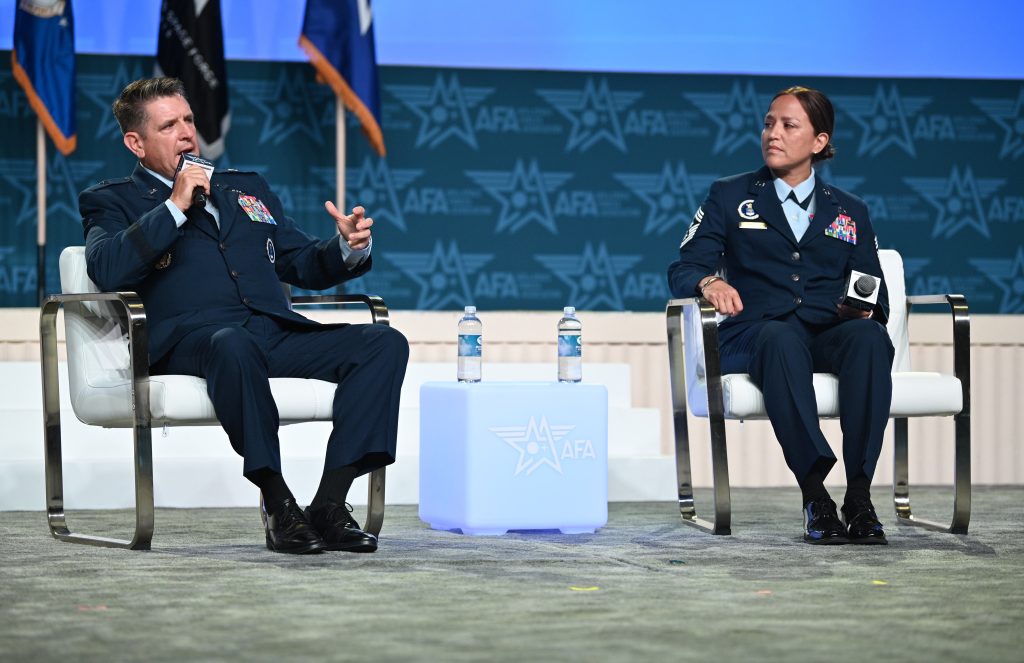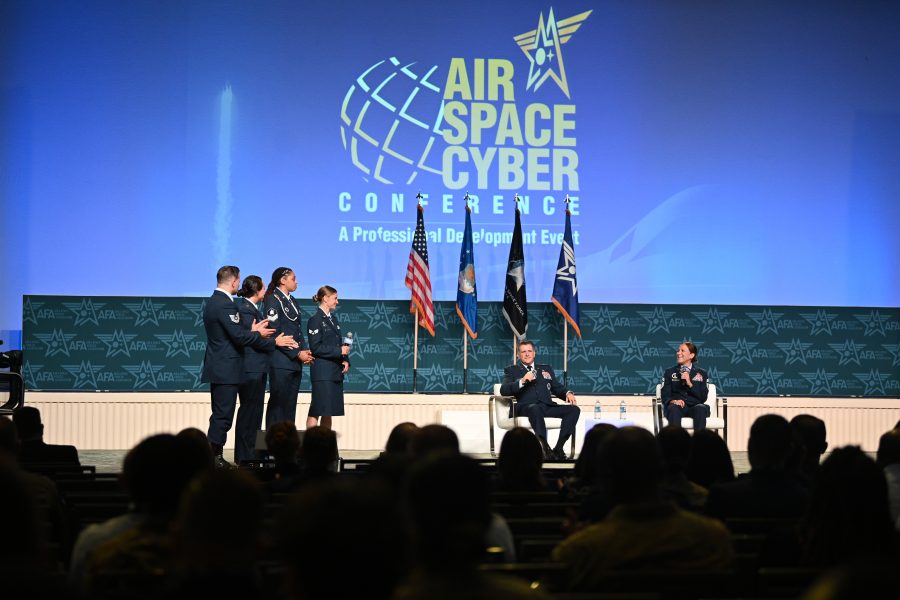Amid military-wide recruiting struggles and bleak long-term trends, the Air Force is set to miss its annual recruiting goal for the Active-Duty component by around 10 percent when the fiscal year ends Sept. 30, with slightly worse numbers for the Guard and Reserve, officials said Sept. 11.
Seeking to close the gap, the Air Force Recruiting Service is looking outside its traditional workforce of recruiters to retired members and everyday Airmen and Guardians, AFRS boss Brig. Gen. Christopher Amrhein and others said at AFA’s Air, Space & Cyber conference.
The Challenges
The Air Force first started projecting a 10 percent recruiting shortfall in March, and the service subsequently implemented changes to relax restrictions on tattoos, naturalization, and body mass index, part of a broader effort to “make sure we’re not unintentionally placing barriers [in front of] Americans who might want to join our formation,” Vice Chief of Staff Gen. David W. Allvin previously told Air & Space Forces Magazine.
Yet there are broader cultural issues that make talent acquisition difficult, Amrhein said. Fewer youth today have parents with military connections, and results a generational gap in military knowledge and experience passed down within families:
- Nine out of 10 American adults cannot name all five branches of the military nowadays
- Only 23 percent of American youth are eligible for enlistment in the military, and less than half of the pool express interest in joining
- Among the approximately 20 million Americans aged 17 to 21, only about 370,000 meet the eligibility criteria, possess the academic qualifications, and show interest in pursuing a career in the Air or Space Force.
“In 1995, about 40 percent of parents were either serving or had served in the military,” Amrhein said. “But in the last couple of years, it’s been only around 13 percent inside households.”
Amrhein also noted a recent study on parents’ and grandparents’ support for their children or grandchildren joining the military. According to the study, around 50 percent of grandparents and fathers favored the idea, while only about 36 percent of mothers said they would support their children joining the service.
“That’s where we come in. People aren’t recommending the service as much as they used to for various reasons,” said Chief Master Sgt. Rebecca A. C. Arbona, Command Chief Master Sergeant of AFRS.
Another factor exacerbating the gap between the military and the community is the shortage of recruitment distribution due to the increasing cost of talent acquisition. As an example, Amrhein pointed out that there are only four Air Force recruiters in the state of Montana.
The Solution
To address these issues, Amrhein said AFRS has introduced E-recruiters—retired Air Force recruiters who stay engaged with the community through virtual platforms. They effectively cover regions that regular recruiters cannot reach.

Amrhein also noted the partnership with AFA and AFA’s recruiting task force and their role in expanding recruitment, adding that he’d like to have a document outlining tactics, techniques, and procedures that he can distribute to chapters nationwide
More broadly, Amrhein urged Air Force and Space Force personnel to share their personal journeys. He emphasized the importance of Active-Duty and retired service members, along with their families, telling their stories to inspire the next generation.
“What was your ‘why’? Why did you join the Air Force, and what do you do every day?” he asked. “It’s important. Tell your story. You are an influencer just as much as you are a recruiter, for every Airman and Guardian.”
To illustrate the diverse motivations behind Airmen’s decisions to join the service, four members from the audience took the stage. Tech. Sgt. Cam Kelsh said his decision to enlist was deeply influenced by the shock of witnessing the Sept. 11, 2001 attacks on the news alongside his mother when he was only in sixth grade. It was at that moment, he said, he realized that his homeland was not invulnerable.
Senior Airman Kristina Schneider said she had a lifelong desire to be part of the Air Force. However, she initially believed it was an impossible dream due to starting her family at a young age. As her children grew older, she mustered the courage to ask them if they were comfortable with her pursuing her dreams. To her surprise, they encouraged her to go for it, and she was able to join the Air Force before reaching the age limit for enlistment.
Amrhein stressed how these unique, individual experiences of all members of Air Force and Space Force could have an impact on the community. And he encouraged everyone to take a more active role in staying connected and sharing information, while highlighting the crucial role of social media, especially to engage with Generation Z.
Amrhein assumed command of AFRS on June 2, acknowledging that he was taking over “in a challenging time.”
